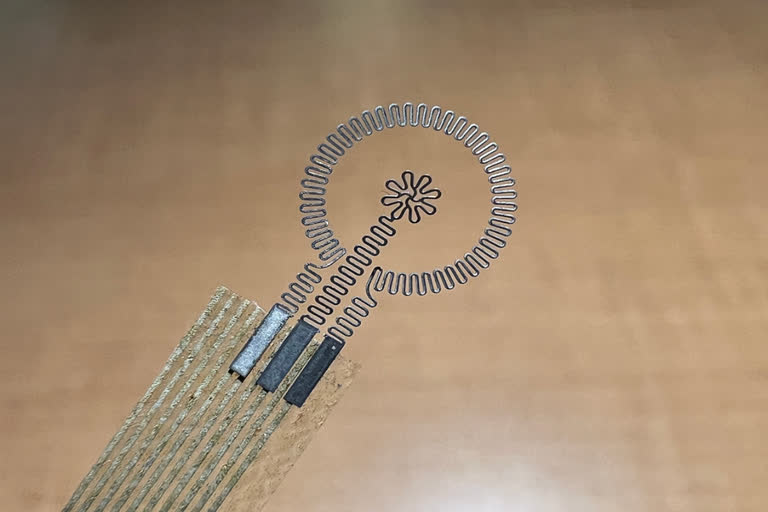Washington: Researchers have developed a first-of-its-kind small, flexible and stretchable bandage that accelerates healing by 30 per cent through the delivery of electrotherapy directly to the wound site. In an animal study, published in the journal Science Advances, the new bandage healed diabetic ulcers much faster in mice than those without the bandage.
The bandage also actively monitors the healing process and then harmlessly dissolves - electrodes and all - into the body after it is no longer needed. The new device could provide a powerful tool for patients with diabetes, whose ulcers can lead to various complications, including amputated limbs or even death, the researchers said.
It marks the first bioresorbable bandage capable of delivering electrotherapy and the first example of a smart regenerative system, they said. "For people with diabetes, infections are even harder to treat and more dangerous," said Guillermo A. Ameer, from Northwestern University, who co-led the study.
Also read: Pill for skin disease may also curb excessive drinking
"For these patients, there is a major unmet need for cost-effective solutions that really work for them. Our new bandage is cost-effective, easy to apply, adaptable, comfortable and efficient at closing wounds to prevent infections and further complications," Ameer said. Although the new bandage is an electronic device, the active components that interface with the wound bed are entirely resorbable.
"As such, the materials disappear naturally after the healing process is complete, thereby avoiding any damage to the tissue that could otherwise be caused by physical extraction," said Northwestern's John A. Rogers, who co-led the study. One side of the smart regenerative system contains two electrodes: A tiny flower-shaped electrode that sits right on top of the wound bed and a ring-shaped electrode that sits on healthy tissue to surround the entire wound.
The other side of the device contains an energy-harvesting coil to power the system and a Near-Field Communication (NFC) system to wirelessly transport data in real time, the researchers said. They also included sensors that can assess how well the wound is healing. By measuring the resistance of the electrical current across the wound, physicians can monitor progress, the researchers said. A gradual decrease of current measurement relates directly to the healing process. If the current remains high, then physicians know something is wrong, they added. (PTI)



